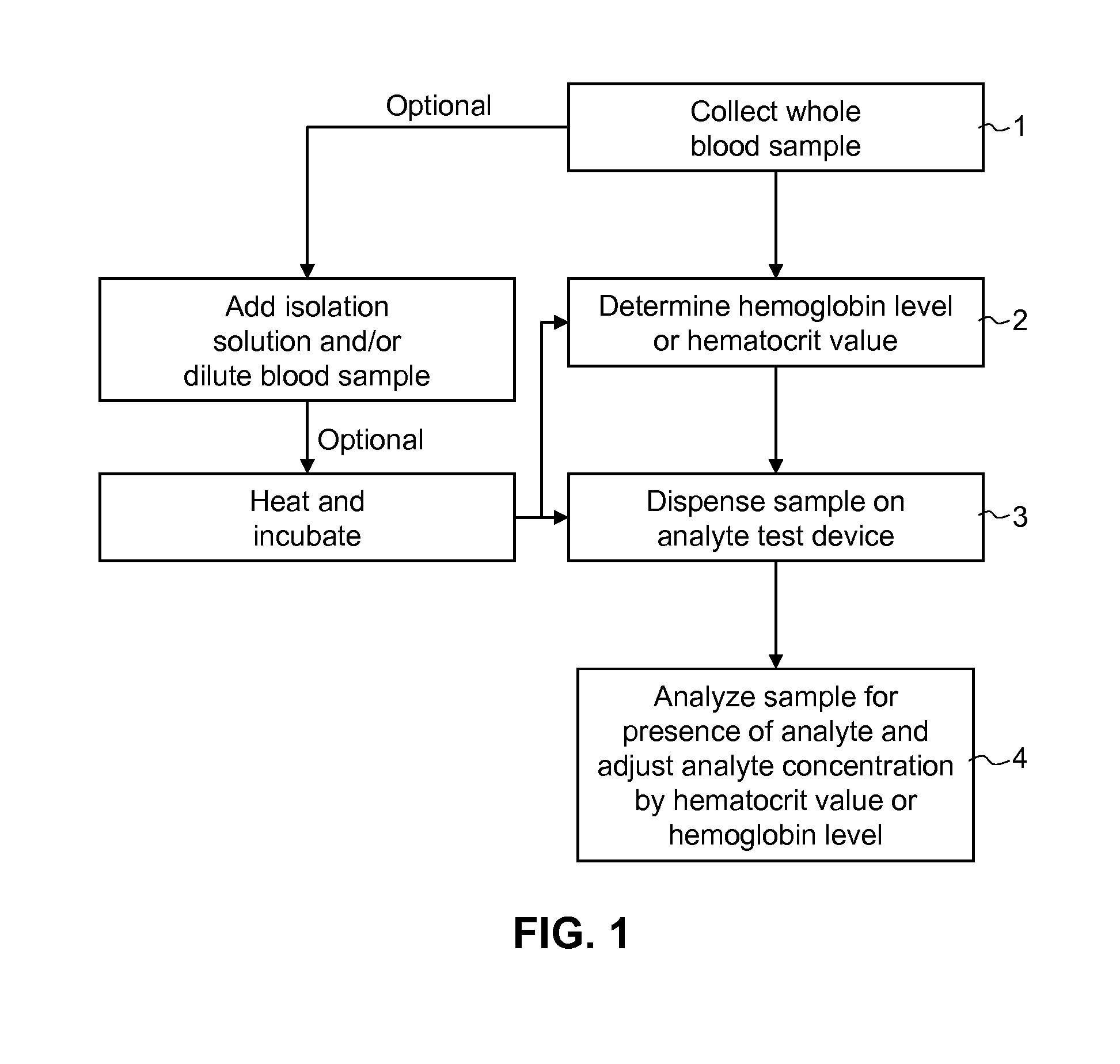Systems and methods for whole blood assays
a technology of whole blood and assays, applied in the field of whole blood assay systems and methods, can solve the problems of many samples requiring dilution, affecting the accuracy of measurement of analyte, and inability to obtain accurate analyte concentration from whole blood using a uniform correction factor
- Summary
- Abstract
- Description
- Claims
- Application Information
AI Technical Summary
Benefits of technology
Problems solved by technology
Method used
Image
Examples
example 1
Detection and Discrimination of Vitamin D
[0101]A lateral flow test device comprised of a test strip and a housing is prepared. The test strip is fabricated with a sample pad comprised of a glass fiber matrix in fluid connection with a nitrocellulose strip, one or both supported on a support membrane.
[0102]Using standard NHS / carboxyl chemistry, vitamin D binding protein is covalently bound to the surface of europium chelate (.beta.-diketone)-incorporated polystyrene beads to form fluorescent microparticle-binding protein conjugates. The microparticle-antibody conjugates are deposited on a glass fiber matrix to form a label pad. The label pad is positioned adjacent the sample pad in a downstream direction. Two or more populations of microparticle-binding protein conjugates may be formed and deposited with the different conjugates directed to different metabolites or analogs of vitamin D may be prepared and deposited in the label pad.
[0103]An absorbent pad comprised of a highly absorpt...
PUM
 Login to View More
Login to View More Abstract
Description
Claims
Application Information
 Login to View More
Login to View More - R&D
- Intellectual Property
- Life Sciences
- Materials
- Tech Scout
- Unparalleled Data Quality
- Higher Quality Content
- 60% Fewer Hallucinations
Browse by: Latest US Patents, China's latest patents, Technical Efficacy Thesaurus, Application Domain, Technology Topic, Popular Technical Reports.
© 2025 PatSnap. All rights reserved.Legal|Privacy policy|Modern Slavery Act Transparency Statement|Sitemap|About US| Contact US: help@patsnap.com



